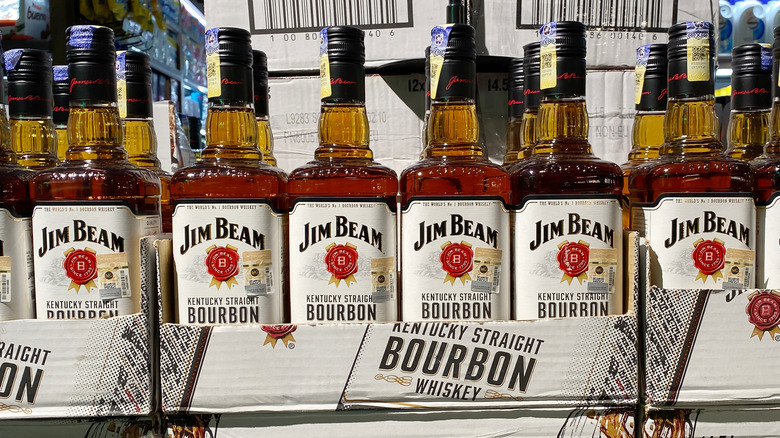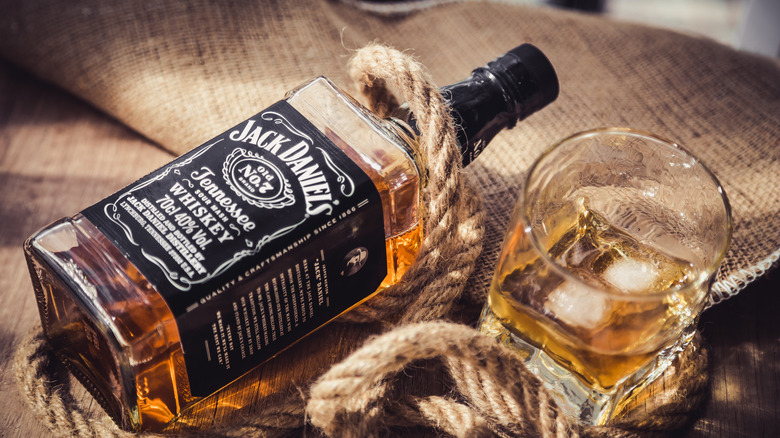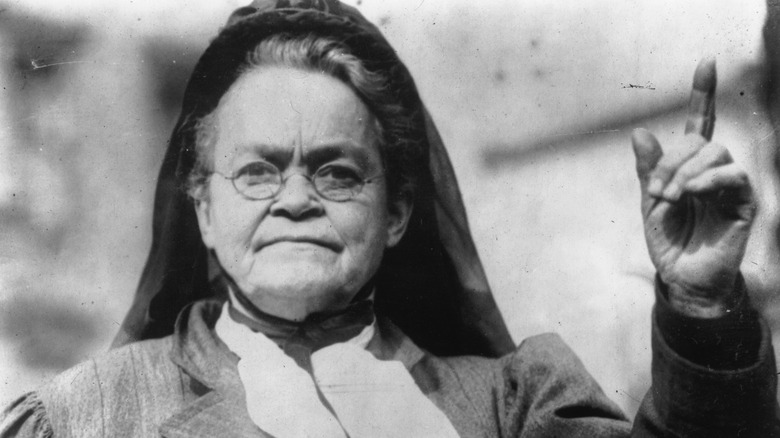The Ridiculous Amount Of Whiskey America Drank In The 1800s
As with all things, drinking must be enjoyed in moderation and responsibly to help keep us and others around us safe. Even the supposedly hard-nosed Puritans enjoyed a good drink every now and then — clergymen Increase Mather described liquor as a "a good creature of God," reports Maine History. The first president had to deal with the Whiskey Rebellion (over liquor taxes). Combine all that with the bootleggers and speakeasies of the 1920s, and it's clear that liquor has always been a part of American history. There was, however, a time when American citizens drank whiskey like it was water — seven gallons of ethanol a year per capita, according to Daniel Okrent, author of "Last Call: The Rise and Fall of Prohibition."
Okrent boldly states, "'Staggering' is the appropriate word for the consequences of this sort of drinking. In modern terms, those seven gallons are the equivalent of 1.7 bottles of a standard 80-proof liquor per person, per week — nearly 90 bottles a year for every adult in the nation. Multiply the amount Americans drink today by three and you'll have an idea of what much of the nineteenth century was like." What exactly was going on in the 1800s? What made us drink so much?
Why was there so much whiskey in the 1800s?
As Jim Vorel of Paste Magazine explains, the newly-settled "Corn Belt" in the Midwest in the 1800s had created an abundance of corn. Since it was expensive to transport the crops across the country and run the risk of them spoiling, farmers found it cheaper and more profitable to simply convert the corn into whiskey (or "liquid assets," as W.J. Rorabaugh calls it in "Alcohol in America," posted at JSTOR). With such an abundance of corn whiskey, the price for it began to drop drastically and it became incredibly affordable, so cheap that milk and tea were actually more expensive. Since rum was heavily taxed and a luxury, whiskey was the far easier drink to get. Americans were drinking so much in 1837 that Englishman Fredrick Marryat's "A Diary in America" described how for every little occasion, from business deals to making up after a fight, there would always be a drink to accompany it. Whiskey was also used medicinally, for sterilization purposes.
How much do we Americans drink now? Via World Population Review, the United States is 25th in global alcohol consumption, with 8.7 liters of pure alcohol consumed per person per year, a far cry from the seven gallons a year back in 1830. In fact, a rather large portion of Americans (about 34%) don't drink at all, via Frank Newport of Gallup. But if whiskey was so profitable and cheap, why did it suddenly stop being so important?
Why whiskey became 'unpopular'
There are a few factors as to why the U.S. began to lose its "whiskey thirst." These factors range from work purposes, religion, and even good manners. In 1830, Rorabaugh noted, the United States was becoming more industrial, leaving the agricultural world behind for a world of machinery. It could become easier to transport corn faster without distilling it, and since more goods, such as shoes and books could be made faster, whiskey lost some of its economic power. Besides, when you worked in a factory, you would probably skip the whiskey and go for something that would keep you awake and alert more often, such as coffee (via History).
Another large factor was the temperance movement, which went hand-in-hand with the women's rights movement. Carrie Nation, perhaps one of the most famous temperance leaders, lead a smashing (and we mean that quite literally) battle against the barrooms of the day, influenced by a drunk husband and strong religious beliefs (via Kansas Historical Society). Other feminist temperance leaders saw alcohol as a gateway to abuse, as husbands could spend all the family's living wages at bars and come back heavily under the influence (via History).
Today even Belarus, which has the highest consumption rate of 4.62 gallons of ethanol per year, can't match up with the "booze hounds" of the Americans in the 1800s. But still, there is no shame in enjoying a shot of whiskey with your friends — so long as it's in moderation.


